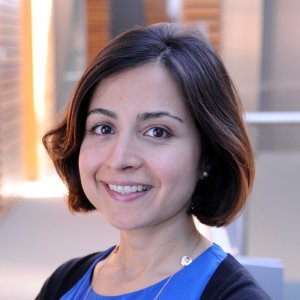Presented By: Single Cell Spatial Analysis Program (SCSAP)
SCSAP Monthly Seminar Series
Raheleh Rahbari, Ph.D. group leader at the Sanger Institute

Title: The mutational landscape and clonal dynamics of Human Somatic and Germline cells
During the course of a lifetime normal human cells accumulate mutations. Studying these mutations provides important insight into the development, maintenance and structure of normal tissues, the mutational processes that have been operative, and the role of selection in shaping cell populations. It can elucidate how each of these are altered by, or contribute to, cancer, other diseases, and ageing. However, characterising such mutations has been technically challenging, as normal cell populations consist of myriad small clones, with the mutations differing between clones. We employed laser capture microscopy combined with low input-DNA whole genome sequencing, to study clonal units across multiple cell types from the same individuals. We compared the mutational landscape in 29 cell types from the soma and germline. Our results revealed the extent of variation in clonal dynamics across tissues. Mutation rates vary between different cell types, with stem cells of the intestinal epithelium exhibiting the highest mutation rates and germ-cells in testis exhibited the lowest mutation rates thus far reported. Several mutational signatures were observed among normal cell types. However, most mutations in almost all cell types were due to SBS1 and SBS5, which are likely due to endogenous mutagenic processes. The relative contributions of these signatures differed between cell types, indicating that their rates of generation are, at least partially, independently regulated.
Register on Zoom at https://tinyurl.com/b59rmbk6
During the course of a lifetime normal human cells accumulate mutations. Studying these mutations provides important insight into the development, maintenance and structure of normal tissues, the mutational processes that have been operative, and the role of selection in shaping cell populations. It can elucidate how each of these are altered by, or contribute to, cancer, other diseases, and ageing. However, characterising such mutations has been technically challenging, as normal cell populations consist of myriad small clones, with the mutations differing between clones. We employed laser capture microscopy combined with low input-DNA whole genome sequencing, to study clonal units across multiple cell types from the same individuals. We compared the mutational landscape in 29 cell types from the soma and germline. Our results revealed the extent of variation in clonal dynamics across tissues. Mutation rates vary between different cell types, with stem cells of the intestinal epithelium exhibiting the highest mutation rates and germ-cells in testis exhibited the lowest mutation rates thus far reported. Several mutational signatures were observed among normal cell types. However, most mutations in almost all cell types were due to SBS1 and SBS5, which are likely due to endogenous mutagenic processes. The relative contributions of these signatures differed between cell types, indicating that their rates of generation are, at least partially, independently regulated.
Register on Zoom at https://tinyurl.com/b59rmbk6